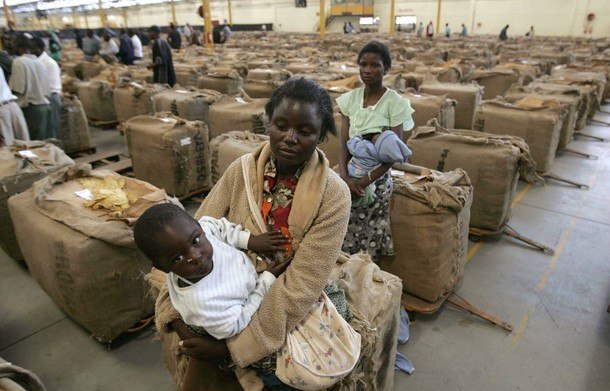
IT is widely acknowledged that one of the many constraints upon Zimbabwe’s economic recovery is the lack of funding available to enterprise.
Almost all businesses have a pronounced insufficiency of resources to finance operations in general and, in particular, to maintain and increase volumes of production and sales, let alone adequately maintain fully and enhance holdings of operating stocks, plant, machinery and equipment, or even to pay adequate salaries and wages.
Expansion and diversification is far beyond the means of most, and very few can even contemplate new investment. The paucity of finances not only has severe limitations upon the businesses, but also has negative downstream economic repercussions. These include minimal consumer spending power due to the inadequacy of employee remuneration, and poor inflows to the fiscus by way of direct and indirect taxes.
The initial trigger to the monetary drought was the cataclysmic hyperinflation that prevailed in 2008. Inflation soared upwards at an accelerating pace never before experienced anywhere in the world. So great was that inflation that the then Central Statistical Office became unable to determine its extent after July 2008, at which time it had assessed the annual rate of inflation to be 231 million per cent. By November, 2008 some estimates placed inflation as high as more than 650 trillion per cent (highlighted by Zimbabwean currency denominations being as great as 100 trillion dollar bank notes).
That rampant inflation necessitated that all required many trillions more working capital to fund holding of manufacturing and other operating inputs and stock in trade than they had previously required, and they were almost wholly unable to access such funds, let alone to fund the extension of credit to customers.
Their funding needs were therefore further intensified by the fact that most of their suppliers could no longer provide them lines of credit. These greater working capital needs applied to virtually all within the economy, irrespective of whether they were engaged in manufacturing, wholesaling or retailing, farming, tourism or any other economic activities.
- Chamisa under fire over US$120K donation
- Mavhunga puts DeMbare into Chibuku quarterfinals
- Pension funds bet on Cabora Bassa oilfields
- Councils defy govt fire tender directive
Keep Reading
The under-capitalisation circumstances of 2008 intensified when on February 3 2009 Zimbabwe’s currency was demonetised, and a multi-international currency system came into being.
What little monies were still held by enterprises were effectively rendered worthless, conversion to hard currencies being at an effective rate of Z$20 trillion: US$1! At that stage, virtually the only capital resources remaining for businesses, in all economic sectors, were their fixed assets (such as land and buildings, plant machinery, furniture, fittings and equipment), and the limited trading stock that they still held.
Primarily because of the demonetisation of Zimbabwean currency and the start of the international currency regime coupled with a belated — but nevertheless commendable — recourse to partial fiscal frugality, Zimbabwe’s horrendous hyperinflation ceased in 2009.
That year’s inflation rate was less than 4%. But that did not reverse the hyperinflation created need for vastly more business working capital than that required prior to the hyperinflation era. It merely halted the escalation in funding needs.
However, other circumstances have continued to impose a growing need for greater business funding. Most businesses had been sustaining losses in the years preceding the slow economic recovery that began in 2009.
The economic upturn enabled a slow diminution in the extent of the losses, but for many did not suffice to eliminate losses entirely and bring about profits. On the one hand, the working capital limitations prevented businesses being able to operate fully, and as a result further losses were sustained, which yet further eroded capital resources.
Losses also resulted from there still being constricted consumer spending power and the resultant limited domestic market demand.
Concurrently, export market competitiveness had markedly decreased as the hyperinflation and low production rendered many Zimbabwean products non-price competitive against products of other countries.In desperation, business looked to the financial sector for funding, but availability has been extremely limited.
Not only had the sector also experienced the hyperinflation created erosion of its capital resources, but in addition the inflow of deposits from all economic sectors, and from the populace in general, was miniscule. On the one hand, many were devoid of funds to deposit and, on the other hand, most were very wary of placing such monies as they had into the banks.
They feared that Zimbabwe would reconvert to its own national currency, with the depositors forfeiting any foreign currency held on their behalf by the banks. Many also feared that there would be a recurrence of Reserve Bank or governmental expropriation of their foreign currency holdings, without due compensation being forthcoming, as is still the case of many funds of exporters, NGOs and others that were held by the Reserve Bank in the period prior to 2009.
These “expropriations” included the funds which were replaced with allegedly tradeable gold bonds due for redemption almost two years ago but still not redeemed because of the Reserve Bank’s bankruptcy, and the failure of government as yet to assume the debts.
On the other hand, the financial sector has had very limited access to critically needed international credit lines. There are many international finance organisations, banks and other institutions that are willing, in principle, to provide substantial credit lines to Zimbabwean banks. But that willingness is muted and contained by Zimbabwe’s exceptionally low creditworthiness rating, it being perceived as a very high credit risk, and most credit insurers being unwilling to insure against that risk.
That lending reticence has been exacerbated and intensified over the last year. In part, that is due to the recurrent confrontational berating of the international community by some of Zimbabwe’s political hierarchy, in part by Zimbabwe’s prolonged default in settlement of debt arrears and, over the last year, by Zimbabwe’s declared intents and legislation for economic indigenisation.
Understandably, there is a profound reluctance to lend to enterprises whose ownership and management may change to unknown parties whose business integrity and operational ability is unknown.
In like manner, most foreign suppliers to Zimbabwean businesses are fearful of extending credit to those businesses, being concerned that the country’s financial circumstances, and its policies, may well prevent timeous payments being forthcoming — intensifying the possibility of the suppliers sustaining bad, irrecoverable debts.
This is yet a further intensification of the capitilisation needs of almost all businesses, whatever their fields of operation in the economy.
Until Zimbabweans, and the world at large, feel assured that Zimbabwe will not revert to its own currency until it has a fully stabilised and thriving economy, and that the politicians will place the needs of the economy and the populace ahead of their megalomaniac and racist beliefs, substantial foreign funding, credit lines and supplier credits will not be forthcoming, and the monetary inadequacies of the economy will continue.











